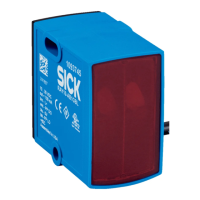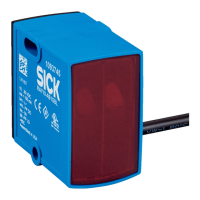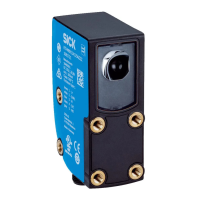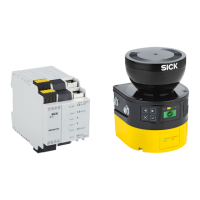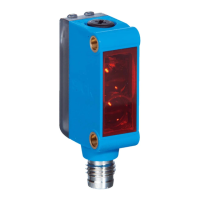a single time-of-flight measurement, but includes evaluated information from numer‐
ous pulses. In this process, the digitized echoes are compiled into data packages
which overlap during evaluation. This guarantees a significantly more stable time and
distance measurement.
3.5.3 Direction measurement
The laser beams are emitted using internally rotating sender-receiver units (SRUs) and
scan the surroundings orbitally. The received measured values are assigned to the
associated angular cut and thus to the direction.
3.5.4 Impact of object surfaces on the measurement
The received signal from a perfectly diffuse reflection from a white surface (diffuse
Lambertian reflector) corresponds to a remission of 100%. By this definition, surfaces
that reflect the light in bundles (specular surfaces, reflectors) have remissions of over
100%.
Reflection
Most surfaces produce a diffuse reflection of the laser beam in all directions. The
structure (smooth or rough), shape (flat or curved), and color (light or dark) of the
surface determine how well the laser beam is reflected.
On very rough surfaces, a large proportion of the energy is lost due to absorption.
Curved surfaces produce a higher diffusion. Dark surfaces reflect the laser beam worse
than light ones (brilliant white plaster reflects approx. 100% of the light, while black
foam rubber reflects approx. 2.4%). The aforementioned surface characteristics can
reduce the scanning range of the device, in particular for surfaces with low remission
values.
Figure 4: Reflection of light on the surface of the object
Angle of reflection
The angle of reflection corresponds to the angle of incidence. If the laser beam hits
a surface at right angles, the energy is optimally reflected. If the laser beam hits a
surface at an oblique angle, energy and range are lost accordingly.
Figure 5: Angle of reflection
PRODUCT DESCRIPTION 3
8020494/1AZF/2021-05-10 | SICK O P E R A T I N G I N S T R U C T I O N S | MRS1000
13
Subject to change without notice
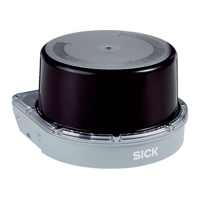
